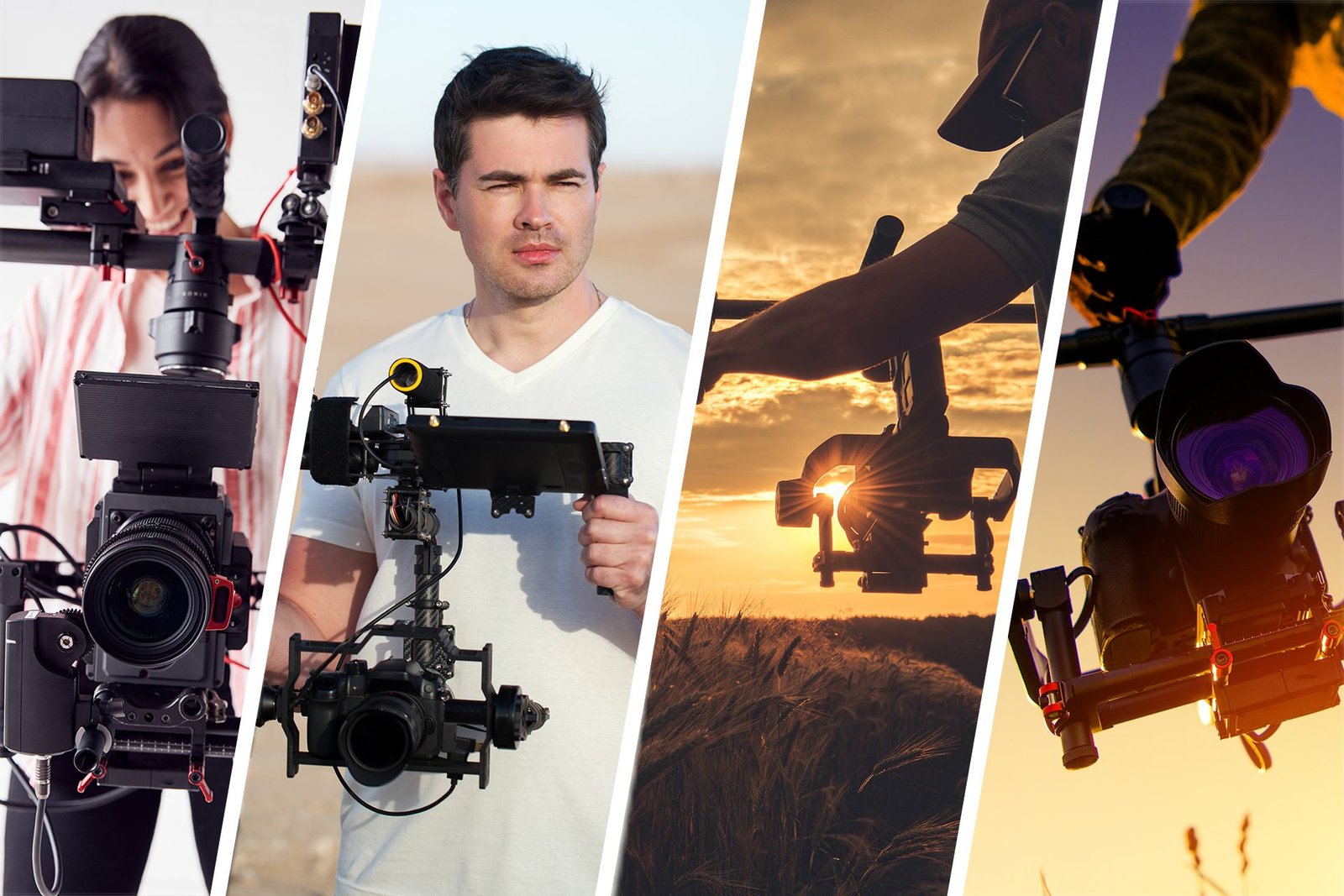In the dynamic world of videography and photography, the pursuit of smooth, stable, and professional-looking footage is paramount. Gimbals have become indispensable tools for many professionals seeking to achieve this level of quality. But do professionals actually rely on gimbals? The answer is a resounding yes. Let’s delve into the reasons why gimbals have become a cornerstone in professional videography and photography.
Understanding Gimbals
First things first, what exactly is a gimbal? In simple terms, a gimbal is a pivoted support that allows a camera to rotate smoothly along an axis. Modern electronic gimbals use motors to stabilize the camera, compensating for unwanted movement and ensuring smooth footage. The evolution of gimbals has transformed the way professionals shoot video, making once impossible shots accessible to anyone.
There are two main types of gimbals: mechanical and electronic. Mechanical gimbals are less common in professional settings today but are still appreciated for their simplicity and reliability. On the other hand, electronic gimbals, equipped with advanced motors and sensors, are the go-to choice for many professionals due to their superior stabilization capabilities.
Why Stability is Crucial in Professional Videography
Imagine watching a movie where every scene is shaky and disorienting. Not very enjoyable, right? Stability in video footage is more than just a technical requirement; it’s essential for storytelling. Stable shots allow viewers to focus on the narrative without being distracted by jarring movements.
In professional videography, the need for stability is paramount. Whether it’s capturing a smooth tracking shot in a film, documenting a live event, or filming a high-octane sports sequence, stability enhances the overall quality and professionalism of the footage. This is where gimbals shine, providing the stability that turns good video into great video.
The Growing Popularity of Gimbals Among Professionals
The use of gimbals has skyrocketed in recent years, especially as video content becomes more prevalent across various industries. From filmmaking and news reporting to real estate tours and vlogging, gimbals have found a home in many professional workflows.
Statistics show that a significant percentage of professional videographers now use gimbals as a standard part of their gear. This trend is particularly evident in Hollywood, where gimbals are used to create dynamic, fluid shots that were once only achievable with expensive equipment like Steadicams. Today, even independent filmmakers and content creators can afford high-quality gimbals, making professional-grade stabilization accessible to all.
Key Features of Gimbals That Appeal to Professionals
So, what makes gimbals so attractive to professionals? For starters, the 3-axis stabilization system found in most gimbals is a game-changer. This system stabilizes the camera along the pan, tilt, and roll axes, effectively eliminating unwanted movements.
Moreover, modern gimbals are designed to be lightweight and portable, making them easy to carry on shoots. This is especially important for professionals who are constantly on the move. Additionally, advanced control systems allow for precise adjustments and seamless integration with various camera models, further enhancing their appeal.
Types of Professionals Who Use Gimbals
Gimbals are versatile tools that cater to a wide range of professionals. Cinematographers and filmmakers use them to achieve smooth, cinematic shots that enhance storytelling. Event videographers, particularly those specializing in weddings and corporate events, rely on gimbals to capture every moment with precision. Sports videographers and action filmmakers use gimbals to follow fast-moving subjects while maintaining stability. Even documentary filmmakers and vloggers find gimbals invaluable for their work, allowing them to produce high-quality content on the go.
Comparing Gimbals to Other Stabilization Tools
Gimbals aren’t the only stabilization tools available, but they do offer unique advantages over other options. For instance, while tripods provide stability, they lack the mobility that gimbals offer. Handheld rigs give some degree of control but can’t match the smoothness of a gimbal. Steadicams, while highly effective, are bulkier and often require more setup time. In contrast, gimbals strike a balance between portability, ease of use, and superior stabilization, making them the preferred choice for many professionals.
Advantages of Using Gimbals in Professional Work
The primary advantage of using a gimbal is the ability to achieve smooth, cinematic shots effortlessly. Gimbals allow for fluid motion that enhances the visual appeal of the footage. They’re also incredibly versatile, suitable for a wide range of shooting environments, from cramped indoor spaces to expansive outdoor locations. Additionally, gimbals can save time during production, as they require less setup and adjustment compared to other stabilization methods.
Challenges and Limitations of Gimbals
Despite their many benefits, gimbals aren’t without their challenges. For beginners, there can be a steep learning curve, particularly when it comes to balancing the camera and mastering the controls. Battery life is another concern, especially on long shoots where charging options may be limited. Moreover, professional-grade gimbals can be expensive, which might be a barrier for small-scale videographers or those just starting out.
Professional-Grade Gimbals in the Market
For those ready to invest in a gimbal, several professional-grade options are available. The DJI Ronin series is a favorite among filmmakers for its robust build and advanced features. The Zhiyun Crane series offers excellent value for money, with models that cater to both DSLR and mirrorless camera users. Freefly’s Movi series is another top contender, known for its high-end performance and innovative design.
How to Choose the Right Gimbal for Professional Use
Choosing the right gimbal depends on several factors. Camera compatibility is crucial—ensure the gimbal can support the weight and dimensions of your camera setup. Portability is another consideration, particularly if you travel frequently for shoots. Budget is always a factor, but it’s worth investing in a reliable gimbal that meets your professional needs. It’s also a good idea to test out gimbals in-store or during a rental period before making a purchase.
Real-Life Examples of Gimbal Use in Professional Projects
Gimbals have played a pivotal role in many high-profile projects. For instance, the use of gimbals in the film “1917” allowed for the creation of continuous, unbroken shots that added to the movie’s immersive experience. Interviews with professional videographers often highlight how gimbals have revolutionized their workflow, enabling them to capture complex shots with ease.
The Future of Gimbals in Professional Videography
As technology continues to evolve, so too will gimbals. Future developments may include more advanced AI-driven features, such as smart tracking and automated scene detection. The integration of gimbals with emerging content platforms, like augmented reality (AR) and virtual reality (VR), could also open up new creative possibilities for professionals.
Alternatives to Gimbals for Professionals
While gimbals are highly effective, they aren’t always the best tool for every situation. Other stabilization methods, such as sliders, jibs, and handheld rigs, offer different creative options. Understanding when to use a gimbal versus other tools is key to maximizing the potential of your equipment.
Conclusion
In conclusion, gimbals have become an indispensable tool for professionals across various fields of videography. Their ability to provide smooth, stable footage makes them a go-to choice for everything from feature films to vlogs. While there are challenges and limitations to consider, the benefits of using a gimbal far outweigh them for most professionals. As technology continues to advance, the role of gimbals in professional videography is only set to grow.
FAQs
Do all professionals use gimbals? Not all professionals use gimbals, but they are widely adopted across various videography and filmmaking sectors due to their effectiveness in stabilizing footage.
How do gimbals improve video quality? Gimbals reduce unwanted camera movement, providing smooth, stable footage that enhances the overall quality and professionalism of the video.
Are gimbals necessary for all types of video work? While gimbals are highly beneficial for many types of video work, they may not be necessary for static shots or scenarios where other stabilization tools are more appropriate.
What are the top gimbals recommended for beginners? For beginners, the DJI Ronin-SC and Zhiyun Crane-M2 are excellent choices, offering a good balance of features, portability, and ease of use.
Can gimbals be used with smartphones? Yes, there are gimbals specifically designed for smartphones, such as the DJI Osmo Mobile series, which provide similar stabilization benefits for mobile videography.





Leave a Reply